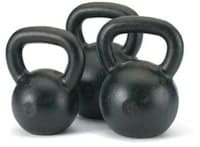Most folks know there are two kinds of diabetes. Type 1 is caused by the insulin-producing cells of the pancreas failing to do their job. There are a variety of reasons for this but the result is the same. People with Type 1 are dependent on insulin from an external source. Type 2 diabetes is another story. It often arises from various hormonal and metabolic dysfunctions, and while it can be controlled with medication, this type of diabetes also readily responds to changes in diet and exercise.

With Type 2 diabetes, the problem is not so much that the body does not produce insulin, but that the body loses its ability to react to the insulin already in the bloodstream. Again, there are a number of possible factors involved, and there has been a lot of discussion in the past few years concerning “metabolic syndrome,” which is in essence a hormonal imbalance that leads to weight gain, development of an insensitivity to insulin’s ability to transfer glucose out of the bloodstream and into the cells and an increase in blood lipid levels, which can result in diabetes and heart disease. It is safe to say that many people on the road to Type 2 diabetes also display signs of metabolic syndrome.
What to do?
Here we will discuss some ways of coping with Type 2 diabetes as a bit of effort, in terms of lifestyle, can have a huge impact.
First, increasing your lean muscle mass and losing belly fat can have a profound effect on your body’s hormonal health. Not only does muscle naturally raise your metabolism by burning more calories than fat, but it also promotes better bone health due to the increased tension on your skeleton from a higher level of muscle tone.
Obviously, exercise plays a key role — but not just any exercise. Short-burst interval training can improve your cardiovascular health, build lean muscle and most importantly switch up the hormonal flux of your body so that it wants to burn fat, instead of store it.
For the past 50 years or so we have been told that eating fat makes you fat. That to protect our hearts and arteries we should lower our cholesterol, and to lower cholesterol we should cut out fats and reduce our intake of meat and eat more carbohydrates. So why are there ever-increasing high rates of obesity, Type 2 diabetes, early onset of diabetes in children, as well as odd metabolic and endocrinological illnesses? Because we may have been wrong.
Also, we easily resort to “eat less, exercise more” and while there is some truth there, we might be seeing only part of this complex issue. Issues of metabolism are far more complex than the simple arithmetic of “calories in – calories out.”
Say what? I thought lack of insulin was the cause of diabetes.
True enough. In type I diabetes that is the case. But, in type II we are usually looking at a situation of Insulin Resistance.The insulin is there, but metabolically we do not have access to it.
Insulin is the hormone that promotes the flow of glucose (the fuel of your body) from your blood into the cells that burn it for energy. When cells become insulin resistant they no longer respond to insulin, so the glucose in the blood does not flow into them; in effect they are starving for nourishment. So, while there is plenty of glucose in the bloodstream and plenty of insulin as well, it is as if your cells are dying of thirst in an oasis.
What happens to all that glucose in the bloodstream?
It causes MORE insulin to be secreted. The body naturally wants to get the high levels of glucose out of the blood and into the cells. When it senses high levels of glucose it responds by upping the amount of insulin.
This causes the blood to have high levels of BOTH insulin and glucose, which leads to all kinds of metabolic mischief. The first being that insulin prevents the body from releasing fat to be burned as energy, and at the same time causes the glucose circulating in the bloodstream to be deposited into the fat cells. In time the lean muscle becomes insulin resistant, while the fat cells are still capable of responding to this hormone. In essence, the fatty tissue gets over-nourished, while the lean muscle and organs suffer from malnourishment.
So how does exercise fit into this equation?
Exercise helps to make your cells less insulin resistant. In effect, all the cells of your body have better access to the glucose in your bloodstream, and once the glucose levels come down, the amount of insulin secreted also comes down. Your body cannot burn fat when there are high levels of insulin in your system. So, getting the insulin levels down is absolutely required if you want to burn off body fat. Intense interval training both promotes the development of muscle, and improves your cells sensitivity to insulin.
Yes, but I hate spending time on a treadmill.
Understood, the good news is that using exercise to shift up your metabolism does not require hours a week on a treadmill. Think about how sprinters look compared to marathoners.  Sprinters tend to be more muscular. This is not a matter of genetics, it is a matter of training. The short and intense training that sprinters use has the side effect of adding a significant amount of muscle. You do not need hours at the gym every week, or running long distances. You need only a few hours within the week. Check out kettle bells or TRX training.
Sprinters tend to be more muscular. This is not a matter of genetics, it is a matter of training. The short and intense training that sprinters use has the side effect of adding a significant amount of muscle. You do not need hours at the gym every week, or running long distances. You need only a few hours within the week. Check out kettle bells or TRX training.
These are whole body types of exercise that promote the development of lean muscle, strengthen your core (think flat abs here), promote coordination and balance, and help to fire up the fat metabolism.
What about the dietary aspects?
As mentioned above, the smoking guns of fat promotion are simple and refined carbohydrates. This not only includes sugar (obviously enough), but any grain that has been processed from its whole state into a power. From your metabolism’s point of view, any refined carbohydrate is simply this; sugar. Those nice brown slices of whole wheat bread that envelope your sandwich; your body sees it as sugar. Those tasty made with honey and oat flour bran muffins; big old lumps of sugar. If it has been ground up, then your body simply (and pretty much instantly) converts it into glucose. And just as Wall Street reflects the paroxysm of wingnut politics, so too as glucose levels rise, insulin levels are sure to follow.
So, what do I eat then?
Basically, you want to eat in such a way so as to keep your blood sugar levels from spiking. Paying attention to the glycemic load of a meal is a good start.
Schwatzbein diet is also a great resource as instead of counting numbers, you arrange what’s on your plate by quadrants and food groups.
In some ways it simply comes down to this; eat more protein, good fats and complex carbohydrates. Go easy, very easy, on the sugars and flours. The other thing to keep in mind is you want keep your blood sugar at a steady level. So it is best to eat a bit throughout the day. Don’t skip meals or starve yourself, as this makes the body think there might be a food scarcity and go into fat retention mode as a safeguard against the possibility of an interruption in nutrition.
I understand how some lifestyle changes can be helpful, how can acupuncture and Chinese herbs treat diabetes?
Both of these are useful in regulating metabolism, and neither are powerful enough to completely reverse the effects of a poor diet, or lack of physical motion. As an adjunct to good eating and exercise habits, they can have a powerful effect in helping to promote good metabolic health. Also, acupuncture in particular, helps with cravings, improvement of bowel function, and an overall sense of well-being.
 Chinese herbs can help to shift metabolism and reduce insulin resistance. For sluggish digestive systems and the resulting fatigue and fuzzy-headedness that goes with it, certain herbal formulas have proven over the course of hundreds of years to be both safe and effective.
Chinese herbs can help to shift metabolism and reduce insulin resistance. For sluggish digestive systems and the resulting fatigue and fuzzy-headedness that goes with it, certain herbal formulas have proven over the course of hundreds of years to be both safe and effective.
Additionally, some of the secondary problems associated with diabetes, such as peripheral neuropathy respond well to both acupuncture and herbs.
The very best way to control type II diabetes is through diet and exercise. The judicious use of acupuncture and Chinese herbs can serve as a valuable adjunct to the lifestyle changes you make.

